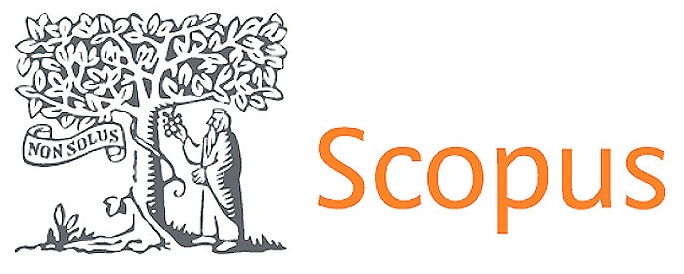Subjective Quality of Life in Latin American
DOI:
https://doi.org/10.56294/sctconf2023384Keywords:
Quality of Life, Latin America, Ordered Logistic Regression, Capital CitiesAbstract
This study analyzes the most appropriate variables to measure the subjective quality of life in Latin America, estimating for this purpose an ordered logistic regression for Buenos Aires, Santiago, San Pablo, Bogota, Panama, La Paz, Mexico City, Caracas, City, Quito, Lima, and Montevideo. The model was able to confirm that the subjective quality of life in the Latin American cities is greatly influenced by the satisfaction that individuals report with their housing and work. We also established that individuals’ well-being in Latin America is linked to having decent housing and work, which contrasts with the high rates of poverty, unemployment, and informality in these countries.
References
1. Allirani, H., Dumka, A., & Verma, A. (2024). A framework for assessment of pedestrianization impacts on quality of life: Combining subjective and objective measures. Cities, 145, 104688. https://doi.org/10.1016/j.cities.2023.104688
2. Aroca, P., Gonzalez, P. A., & Valdebenito, R. (2017). The heterogeneous level of life quality across Chilean regions. Habitat International, 68, 84-98. https://doi.org/10.1016/j.habitatint.2017.06.010
3. Biagi, B., Ladu, M. G., & Meleddu, M. (2018). Urban quality of life and capabilities: An experimental study. Ecological Economics, 150, 137-152. https://doi.org/10.1016/j.ecolecon.2018.04.011
4. CAF. (2017).Encuesta CAF 2017: trayectorias laborales y productivas en América Latina. Retrieved from http://scioteca.caf.com/handle/123456789/1400
5. Chisadza, C., & Bittencourt, M. (2019). Economic development and democracy: The modernization hypothesis in sub-Saharan Africa. The Social Science Journal, 56(2), 243-247. https://doi.org/10.1016/j.soscij.2018.10.007
6. Fagerland, M. W., & Hosmer, D. W. (2017). How to test for goodness of fit in ordinal logistic regression models. The Stata Journal: Promoting Communications on Statistics and Stata, 17(3), 668-686. https://doi.org/10.1177/1536867X1701700308
7. Flavin, P. (2019). State government public goods spending and citizens’ quality of life. Social Science Research, 78, 28-40. https://doi.org/10.1016/j.ssresearch.2018.11.004
8. Hosseini, A., Finn, B. M., & Momeni, A. (2023). The complexities of urban informality: A multi-dimensional analysis of residents’ perceptions of life, inequality, and access in an Iranian informal settlement. Cities, 132, 104099. https://doi.org/10.1016/j.cities.2022.104099
9. Hu, S., & Das, D. (2019). Quality of life among older adults in China and India: Does productive engagement help? Social Science & Medicine, 229, 144-153. https://doi.org/10.1016/j.socscimed.2018.06.028
10. Juknys, R., Liobikienė, G., & Dagiliūtė, R. (2018). Deceleration of economic growth—The main course seeking sustainability in developed countries. Journal of Cleaner Production, 192, 1-8. https://doi.org/10.1016/j.jclepro.2018.04.231
11. Kaklauskas, A., Zavadskas, E. K., Radzeviciene, A., Ubarte, I., Podviezko, A., Podvezko, V., Kuzminske, A., Banaitis, A., Binkyte, A., & Bucinskas, V. (2018). Quality of city life multiple criteria analysis. Cities, 72, 82-93. https://doi.org/10.1016/j.cities.2017.08.002
12. Kubickova, M., Croes, R., & Rivera, M. (2017). Human agency shaping tourism competitiveness and quality of life in developing economies. Tourism Management Perspectives, 22, 120-131. https://doi.org/10.1016/j.tmp.2017.03.002
13. Kubiszewski, I., Jarvis, D., & Zakariyya, N. (2019). Spatial variations in contributors to life satisfaction: An Australian case study. Ecological Economics, 164, 106345. https://doi.org/10.1016/j.ecolecon.2019.05.025
14. Leontiev, D. (2020). Quality of life and well-being: Objective, subjective and agentic aspects. Psikhologicheskii zhurnal, 41(6), 86-95. https://doi.org/10.31857/S020595920012592-7
15. Nevado-Peña, D., López-Ruiz, V.-R., & Alfaro-Navarro, J.-L. (2019). Improving quality of life perception with ICT use and technological capacity in Europe. Technological Forecasting and Social Change, 148, 119734. https://doi.org/10.1016/j.techfore.2019.119734
16. Pătărlăgeanu, S. R., Rădulesc, C. V., Dinu, M., & Constantin, M. (2020). The impact of heavy work investment on the economy and the individual. Amfiteatru Economic, 22(14), 1085-1102.
17. Rogge, N., & Van Nijverseel, I. (2019). Quality of life in the european union: A multidimensional analysis. Social Indicators Research, 141(2), 765-789. https://doi.org/10.1007/s11205-018-1854-y
18. Sechel, C. (2021). The share of satisfied individuals: A headcount measure of aggregate subjective well-being. Journal of Economic Behavior & Organization, 186, 373-394. https://doi.org/10.1016/j.jebo.2021.03.036
19. Sen, A. (2017). Collective choice and social welfare (An expanded edition. First Harvard University Press edition.). Harvard University Press.
20. Skevington, S. M., & Böhnke, J. R. (2018). How is subjective well-being related to quality of life? Do we need two concepts and both measures? Social Science & Medicine, 206, 22-30. https://doi.org/10.1016/j.socscimed.2018.04.005
21. Sujarwoto, S. (2021). Development as happiness: A multidimensional analysis of subjective well-being in Indonesia. Economics & Sociology, 14(2), 274-293. https://doi.org/10.14254/2071-789X.2021/14-2/15
22. Valente, R. R., & Berry, B. J. L. (2016). Working hours and life satisfaction: A cross-cultural comparison of latin america and the united states. Journal of Happiness Studies, 17(3), 1173-1204. https://doi.org/10.1007/s10902-015-9637-5
23. Zhang, Y., Zhang, B., & Mao, W. (2023). Incomplete-ownership property communities: Informal gated communities in Beijing and the issue of life satisfaction. Cities, 137, 104344. https://doi.org/10.1016/j.cities.2023.104344
Downloads
Published
Issue
Section
License
Copyright (c) 2023 Carolina Henao, Jenny Paola Lis-Gutiérrez, Manuel Ignacio Balaguera (Author)

This work is licensed under a Creative Commons Attribution 4.0 International License.
The article is distributed under the Creative Commons Attribution 4.0 License. Unless otherwise stated, associated published material is distributed under the same licence.



